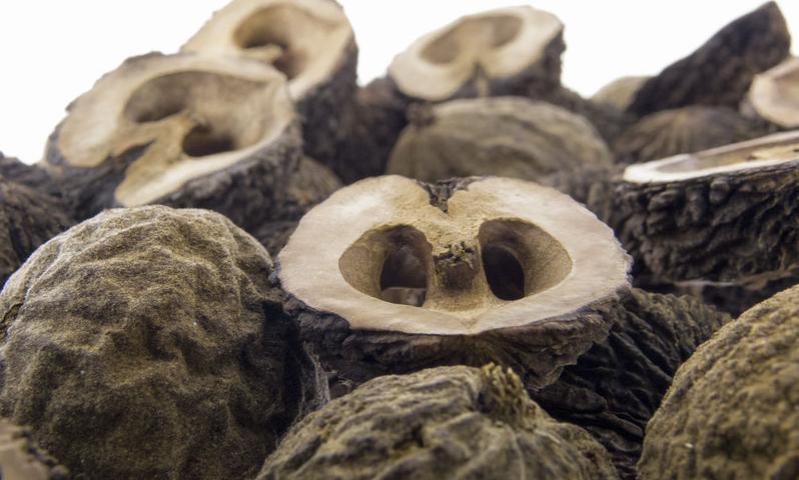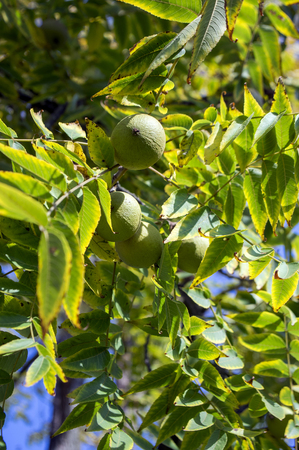 />
/>
Latin Name: Juglans nigra
Family: Juglandaceae
Genus: Juglans
Common Names: black walnut, eastern black walnut, American walnut
Origin: native to eastern North America
Distribution Area: found in riparian zones throughout the eastern U.S.
Plant Part Used: bark, leaf, fruit (nut), and fruit hull
Botanical Information: The medium size of a black walnut tree varies from 70-90 feet tall and 2-3 feet in diameter. The branches are extensively spread and create a huge crown. The bark is thick and brown to grayish-black. The bark is deeply grooved and has narrowing branched ridges. The small branches are thick with furrowed leaf scars and of light brown color. The leaves are up to 60 cm long with 9-23 small leaves joined precisely to a sturdy rachis. There are about 17-50 stamens on the flowers, but no pistils. The shape of fruits is globular and the size is 4-6 cm in diameter. The fruits are yellowish-green, and are hidden in a stout, a bit fleshy hull, covered with small hairs.

CHEMICAL COMPOSITION
As a result of laboratory studies, the following nutrients are found in the black nut:
- Juglone. Juglone gives an iodine smell to the black nut fruits
- Tannins are tannic (astringent) substances
- Bioflavonoids
- Anthocyanides
- Organic Acids And Vegetable Fats
- A Lot Of Vitamins: ascorbic acid (50 times more than citrus), vitamin A and its precursor beta-carotene, all B vitamins;
- Micro- And Macro Elements: selenium, magnesium, iron, silicon, potassium, phosphorus, manganese, cobalt.
“I could eat black walnut all the time, it’s not a flavor of the week!”
Herman Cain
*This article is for informational purposes only. We suggest consulting with a physician before using these or any other herbal supplements.
